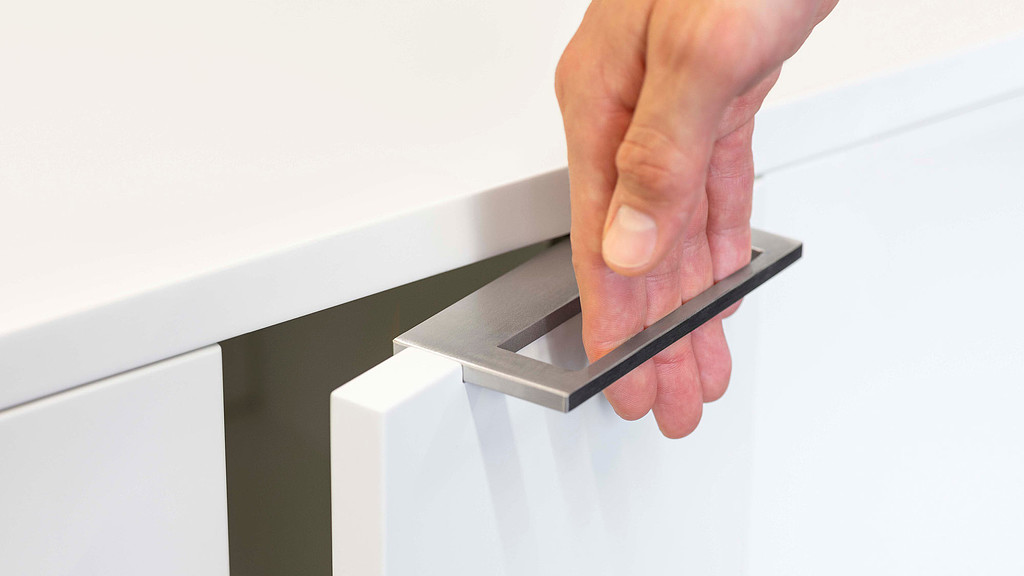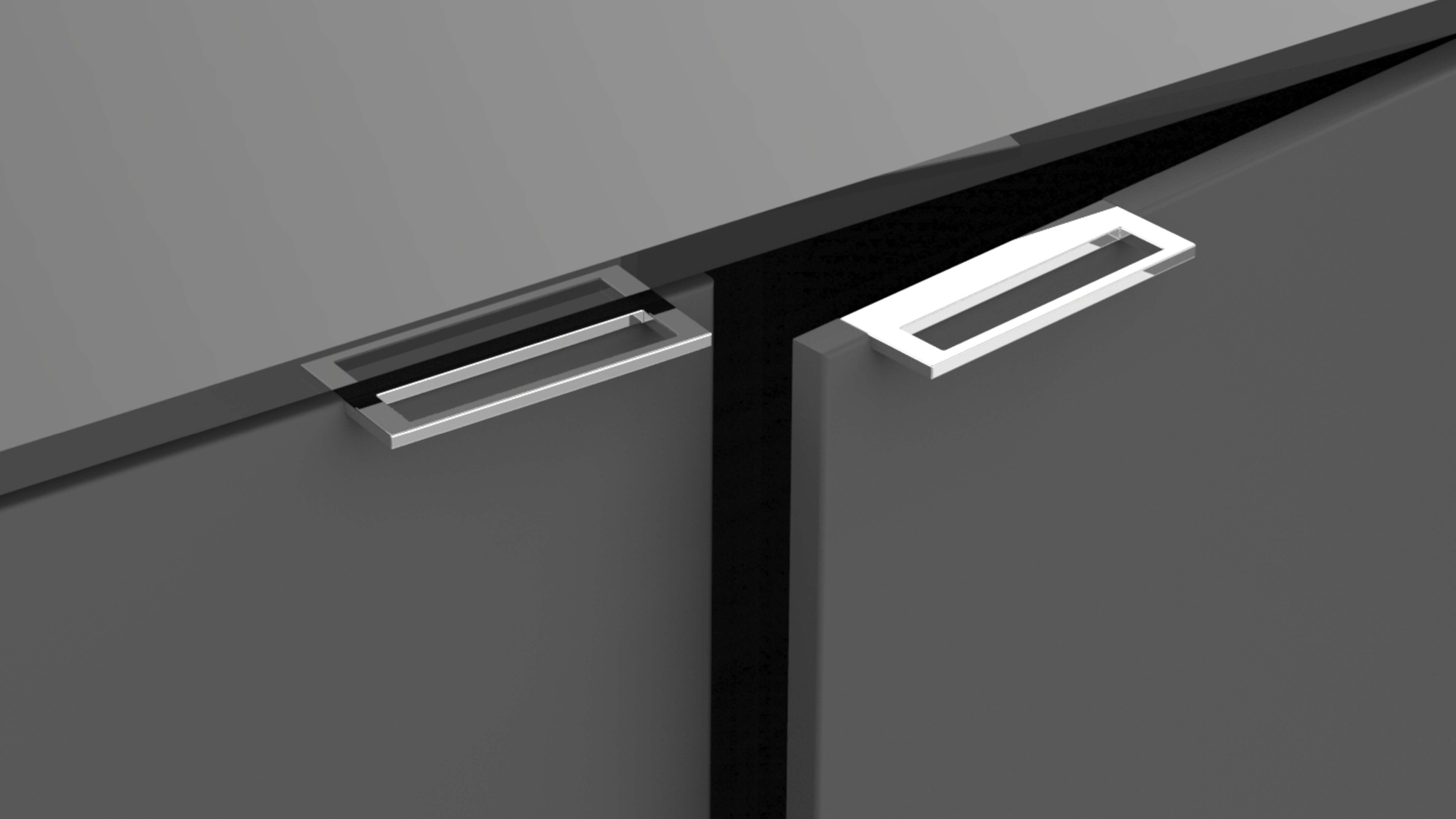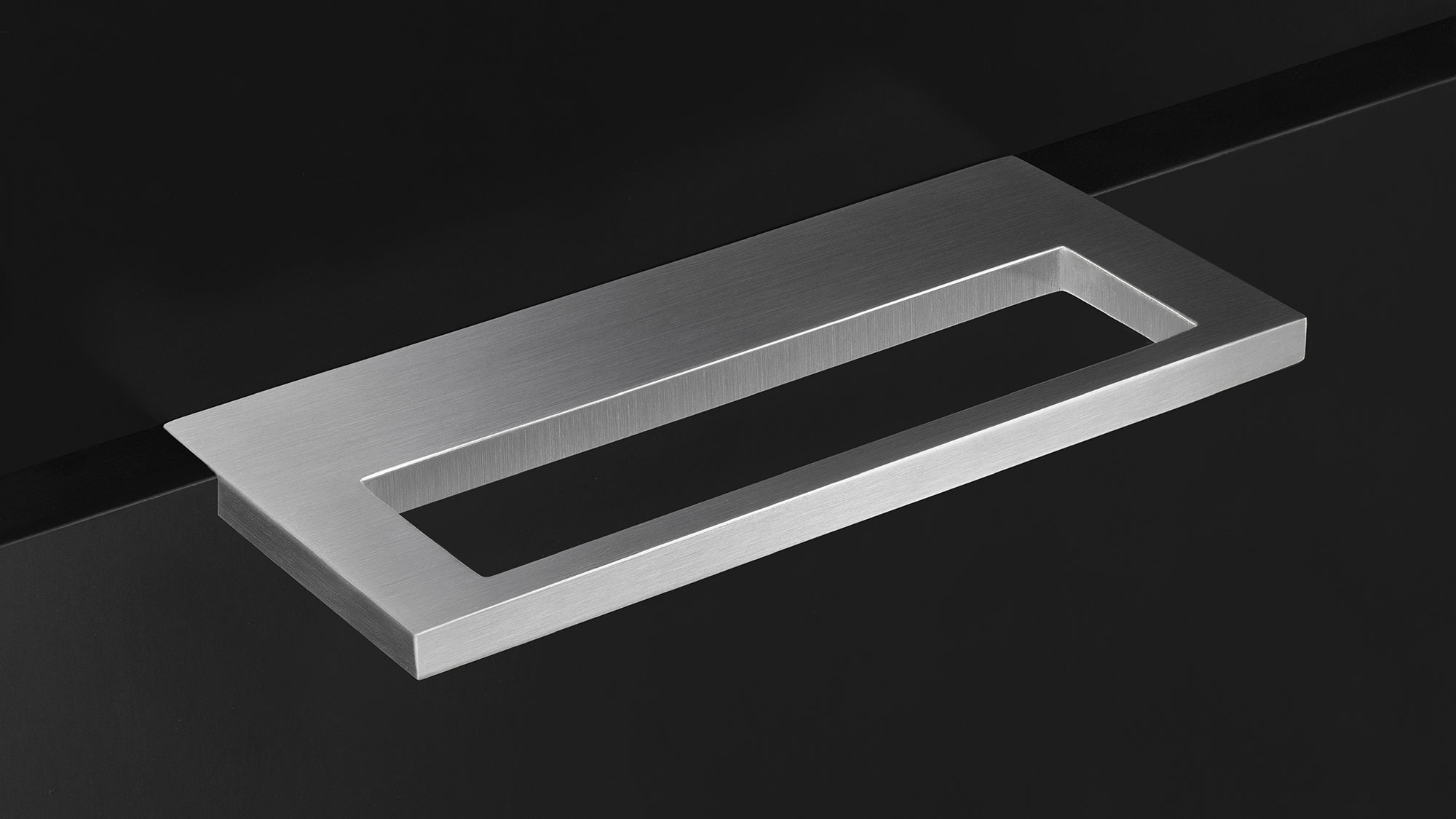Inclusive Product Design
Should Never Exclude Style
May 15, 2024 | By Scott Star
Products that are ADA compliant are typically well-engineered, but frequently bulky, institutional in appearance, and emotionally dispiriting — and millwork pulls are no exception. Wire, or C-shaped, pulls that attach to door and drawer fronts can be a safe go-to from an accessibility standpoint, but designers of commercial interiors often prefer edge-mounted tab pulls for the custom cabinetry they specify for reception areas, conference rooms, kitchens, and closets; their thin profile gets lost in the seams and doesn’t pull focus from the facings. The problem is that many edge-mounted pulls can contradict interpretations of the current ADA standards, confounding the selection process.
For Gensler’s New York Product Development practice, it all began with the type of chance encounter and spontaneous innovation that can only happen in a physical office. While zipping down a corridor one day, I ran into one of our technical directors who told me that as fast as our interior designers were specifying tab pulls for their projects, our technical team was striking them from the specs. Because they necessitate pinching with a thumb and finger, their ADA compliance was being called into question. This was leading to rework, as the hardware had to be reselected, and something less than realization of the full design intent, as the respecified product was usually a wire pull.
So, to help disambiguate edge pull use, we got cracking and designed a collection of seven millwork pulls — three of which are edge-mounted while conforming to the intent expressed in the current ADA accessibility guidelines. Designed for inclusivity, all pulls have a minimum opening width of 4" and a minimum opening depth of 1" (based on typical door/drawer facing dimensions), allowing them to be operated with one hand but without tight grasping, pinching, or twisting of the wrist. And the three edge-mounted options function just like conventional, surface-mounted wire pulls, even though they attach to the sides of the door and drawer fronts to preserve the visual integrity of the cabinetry.
Inclusive Product Design in Action
Our inclusive product design process started by assembling a team of top Gensler technical directors and interior and industrial designers. After identifying the ten most popular pull styles (tab, wire, recessed, T-shaped, etc.), the team proceeded to evaluate each against seven relevant requirements in the current ADA standards:

Several pull styles (knobs, for example) were immediately eliminated from consideration since they require grasping and/or pinching to operate. The remaining styles were shortlisted for further examination, with the understanding that their form and dimensioning would have to be carefully considered to achieve ADA compliance and offer a truly inclusive product.
Next, our designers created over twenty options across the greenlighted styles, each of which was subsequently vetted by our technical directors against the seven relevant requirements. Approved designs were 3D printed for visual and ergonomic analysis, and the best were submitted to our manufacturing partner for confirmation of engineering feasibility and cost. Prototypes were prepared by the manufacturer in the intended production materials and returned to the project team for final review.
Inclusive Product Design in Practice
The result — used on over 700 projects to date — is a collection of pulls that offers easier operation by more people than other edge- and surface-mounted options. The openings are spacious and welcoming, allowing for engagement with either hand from multiple approaches while responding to the limitations associated with disability, injury, and age. Pulls can be specified in 1” increments, from 5” to 12” in width, to create the right balance for doors and drawers of different sizes. And with finishes ranging from stainless steel to powder coated and PVD gold to antimicrobial copper, there’s something to suit virtually any interior.
Disability is frequently equated with an inability to experience the built environment to its fullest, and one of the most physically and emotionally frustrating experiences any person can face is not being able to “get in.” By following a rigorous and conservative interpretation of the ADA standards, Gensler’s Product Development practice has made the act of opening and closing doors and drawers easier for more people — all while demonstrating that accessible products can integrate seamlessly into the most elegant of spaces. Our millwork pulls support inclusion beautifully.
Click here for more information on ADA Compliant Millwork Pulls
NOTE: All pulls in the collection were designed to comply with the ADA and similar accessibility requirements, however final interpretation of accessibility compliance is the responsibility of the specifier and should be determined relative to specific project conditions and local codes.
To learn more about inclusive product design, please contact Scott Star at .
For media inquiries, email .



